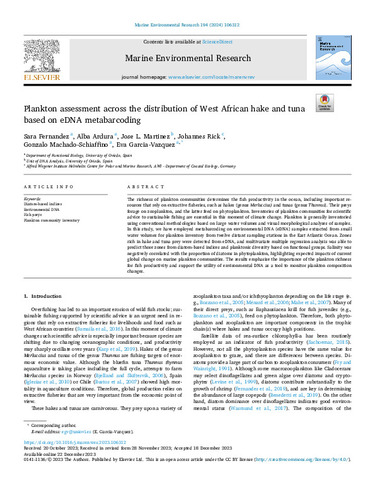Plankton assessment across the distribution of west african hake and tuna based on edna metabarcoding
Fecha de publicación:
2024
Versión del editor:
Citación:
Marine Environmental Research, 194 (2024); doi:10.1016/j.marenvres.2023.106312
ISSN:
Notas Locales:
OA ATUO23
Patrocinado por:
This study was funded from the Spanish Ministry of Science and Innovation GrantGLOBALHAKE PID2019-108347RB-I00, and from the Government of Asturias, Grant AYUD/2021/50967. The work on board RV Polarstern was funded from the Alfred Wegener Institute Grant No. AWI_PS116_00. We are grateful to Polarstern crew for their help with sampling and tasks on board. Sara Fernandez holds Margarita Salas Grant AYUD/2021/58385.
Colecciones
- Artículos [36390]
- Biología Funcional [772]
- Investigaciones y Documentos OpenAIRE [8035]
Ficheros en el ítem





